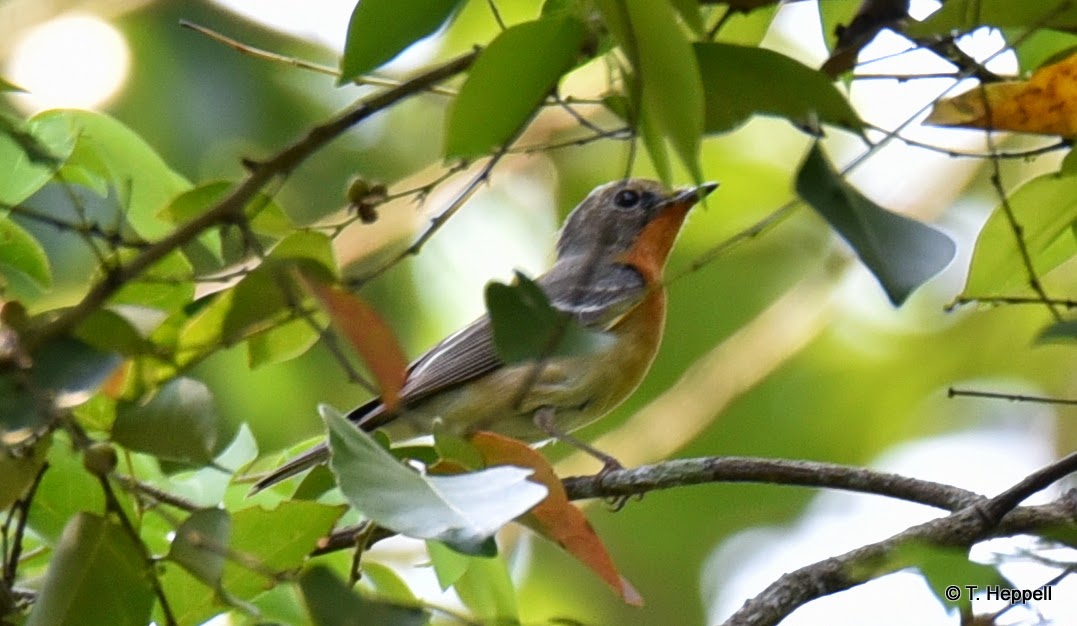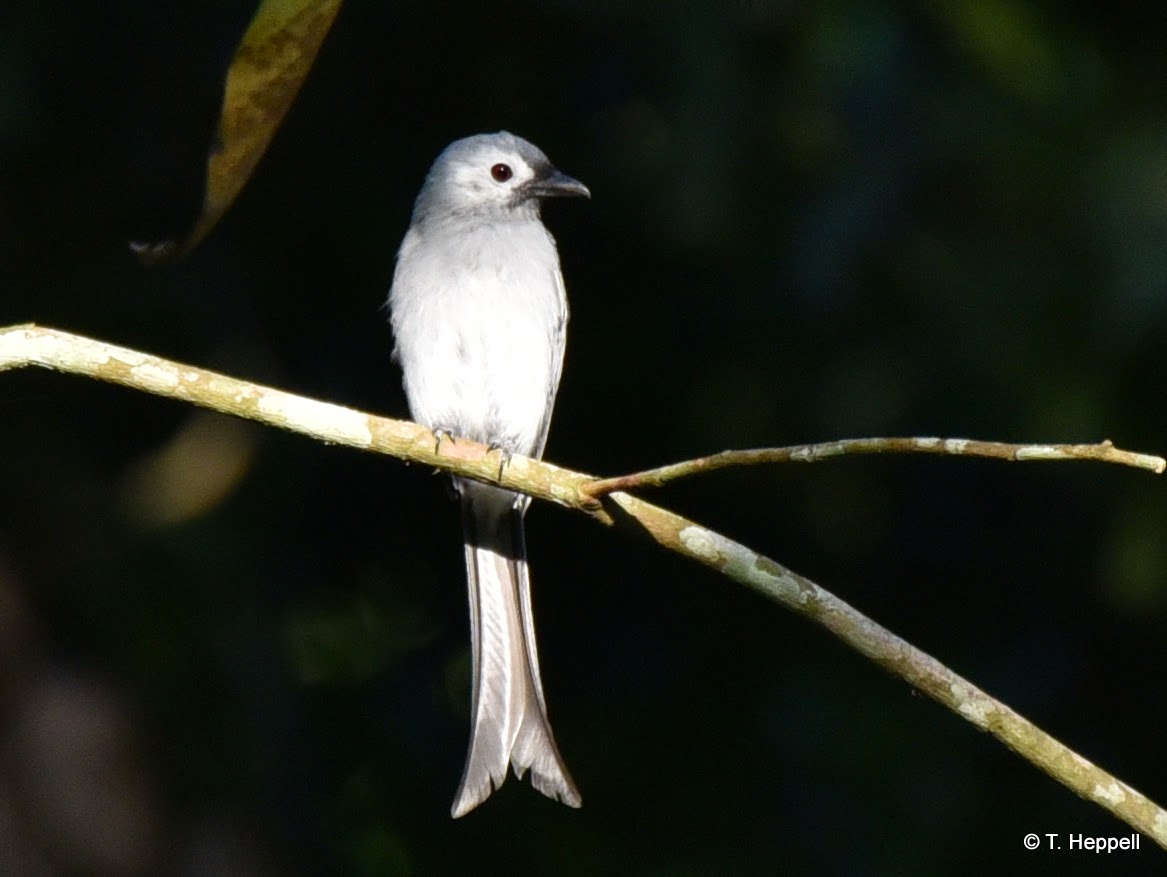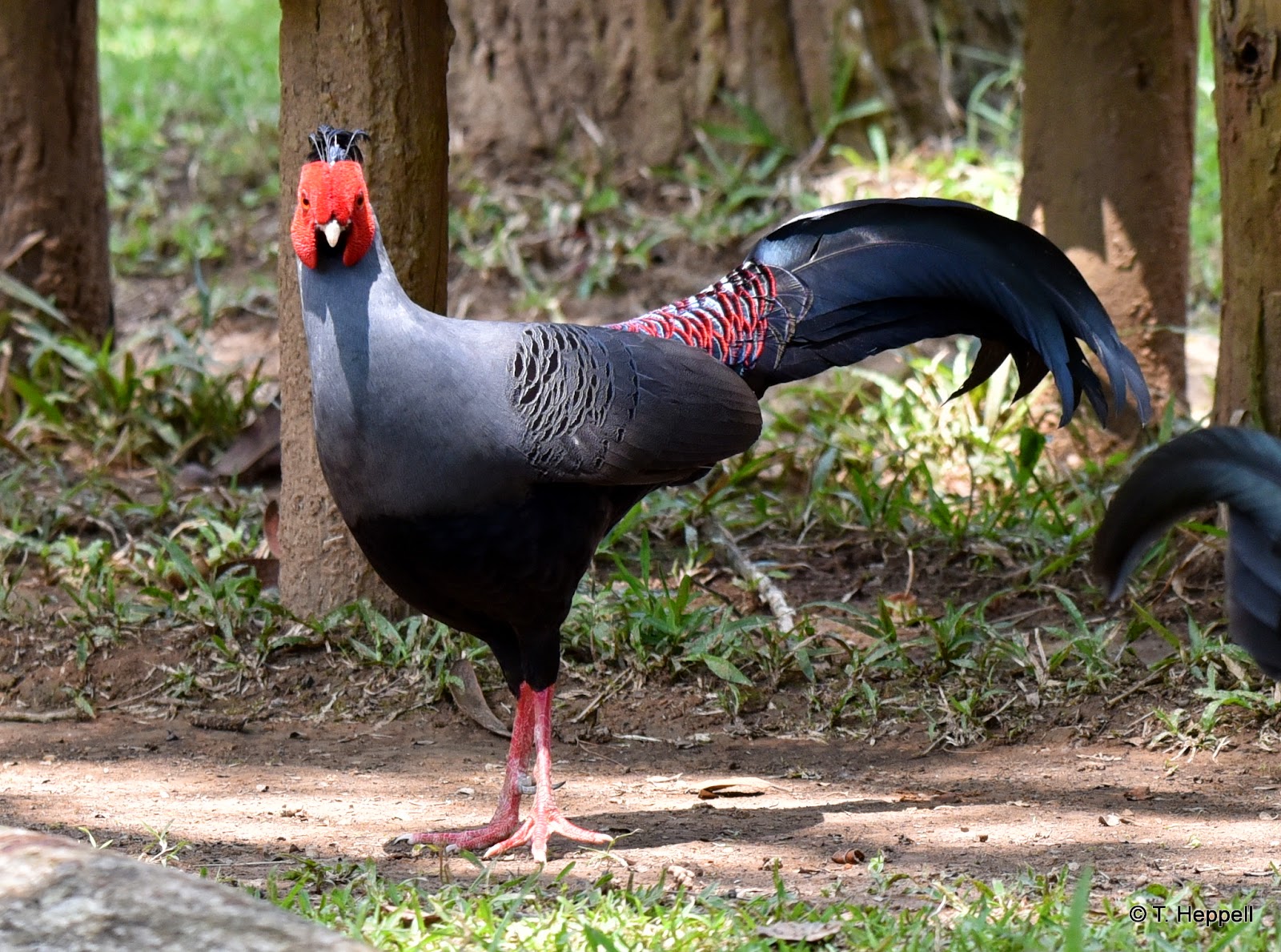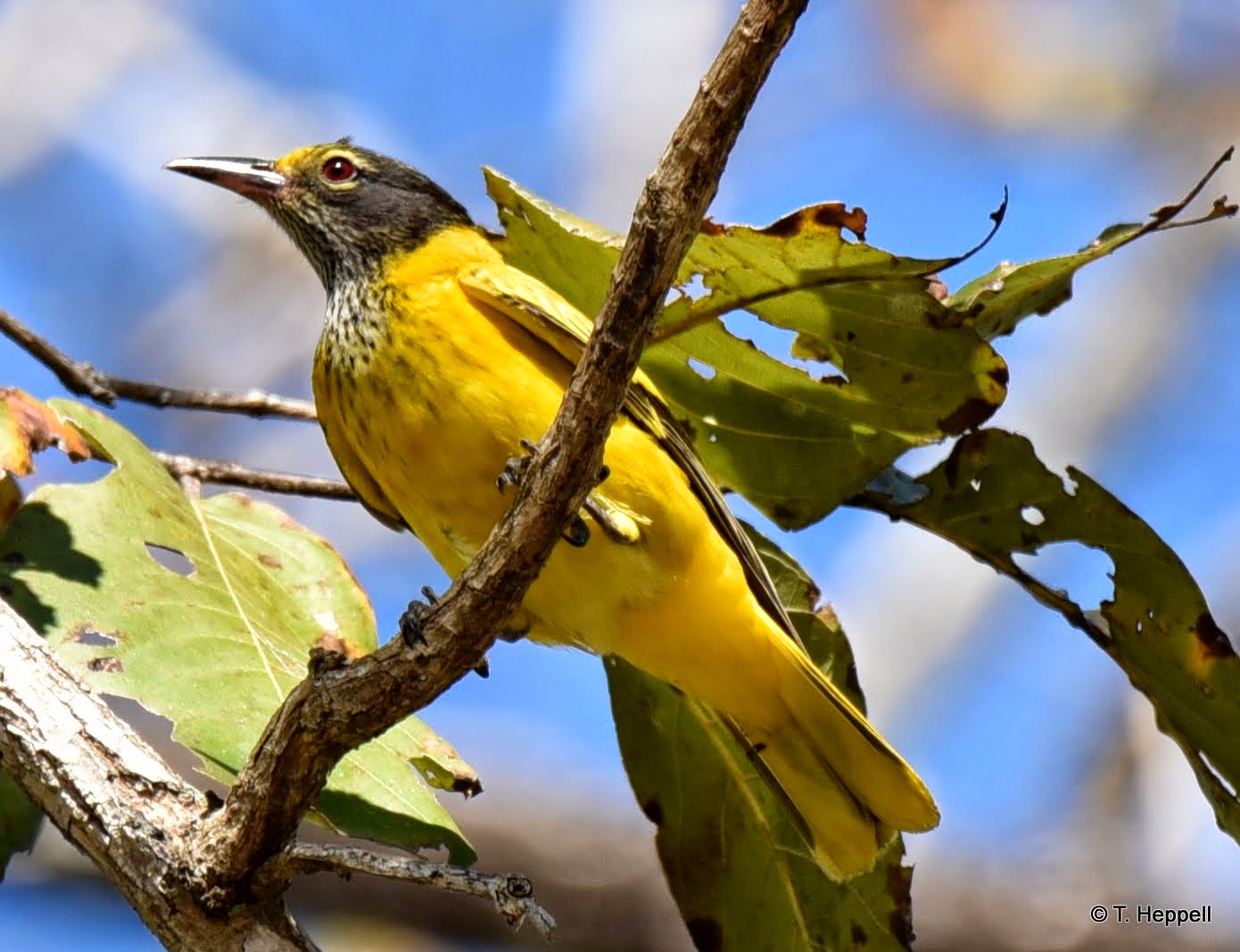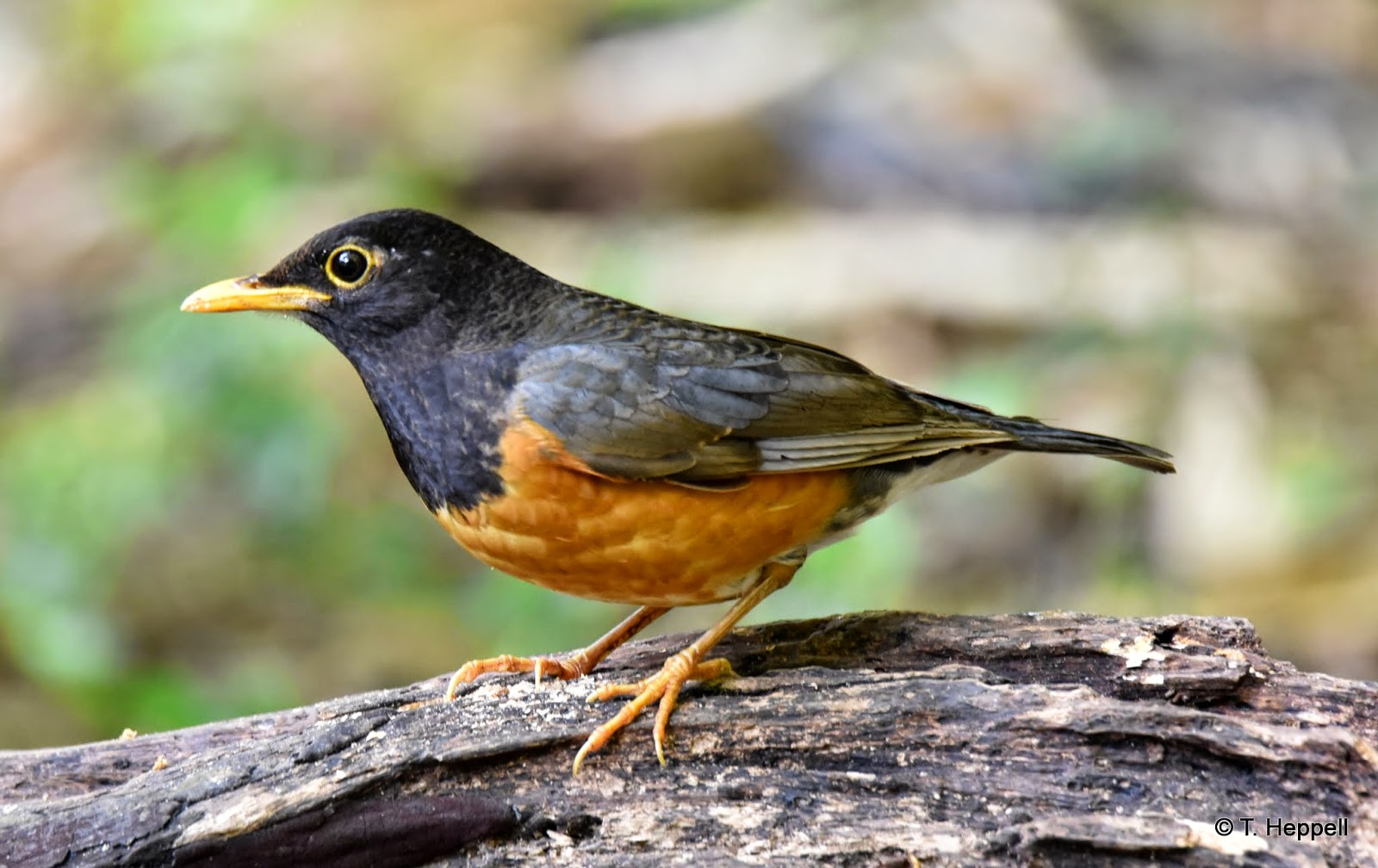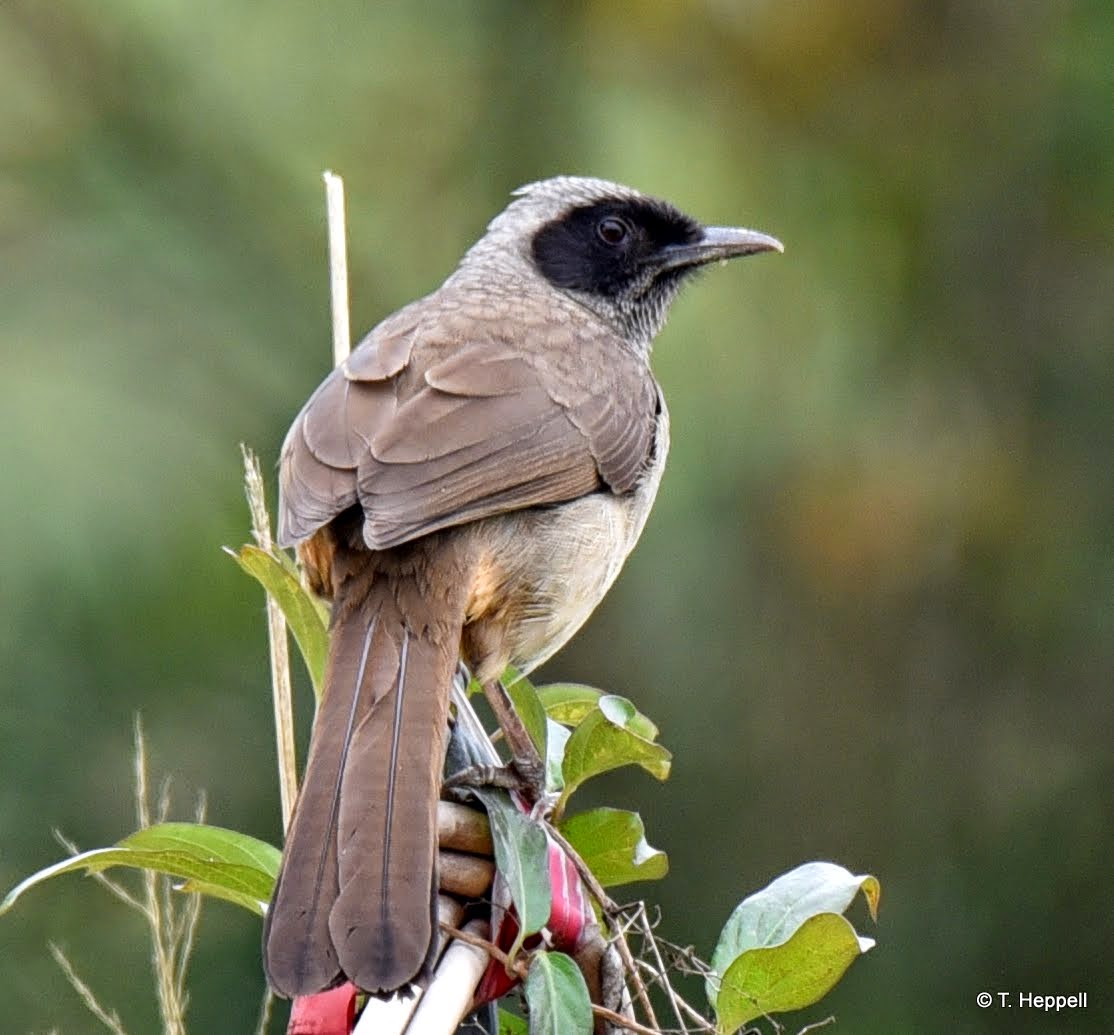We heard Nam Nao Nat'l Park would be a reliable site to see the Red-headed and Orange-breasted
Trogons but to go would require taking a domestic
flight to Phitsanulok from Bangkok.
Uthai C. from http://www.chiangmaibirding.com suggested that we include Khao Yai and also visit the wildlife sanctuary at Phukieo for a day visit during our 3 nights in Nam Nao. He helped to book accommodation inside the park, since Nam Nao is one of the least visited parks and no hotels outside to stay. We flew, with Lioe, on AirAsia to Bangkok on 28th March to connect NOK Air’s afternoon's flight to Phitsanulok, the nearest airport. It was late afternoon when we arrived and Uthai picked us the next morning 29th March for the 3.5 hours drive to Nam Nao National Park.
The entrance fee was 200 baht per person and at the park HQ we got our keys to our chalet. It was a newly renovated 2-bedroom unit with a fridge in the living room, which was better than we expected. There were not many visitors to Nam Nao except for a group of university students who left the next day. It was very hot in the day walking the trails, but behind our chalet was the forest and some nice birds came in the late afternoon. We saw the White-bellied Woodpecker, a Greater Yellow-naped and a Eurasian Jay from the veranda. As it was low season, only 2 ‘restaurants’ were operating and food was good at both.
The Red-headed
Trogon was seen as we approached the camp ground the first afternoon. Unfortunately
it flew into a bamboo grove and we did not see it until our last afternoon. On 31st March Uthai drove us to
Phukieo Wildlife Sanctuary which was 3 hours away. We stopped at a 7-11 shop to
purchase buns for lunch as there would be no food stalls at Phukieo. When we arrived and enquired at the office, the park officer showed us a trail where a
bird hide was located. As we approached the hide, leeches were wriggling on the dry leaves. It
was thus a short stay at the hide, and back to the camp grounds, where a flock of
Red-billed Blue Magpies were foraging for food. A pair of Siamese Firebacks came out from the forest to forage followed by a pair of Red Jungle
fowls. The Green Peafowls were quite tame walking around the camp grounds.
We returned to Nam Nao in the afternoon and were rewarded with the Red-headed Trogon appearing near the camp ground and posed long enough for some good shots.
On 1st April we left Nam Nao at 06:30 am for the 5-hour drive to Khao Yai Nat'l Park. We arrived Khao Yai in the afternoon, paid the entrance fee of 400 baht per person, and checked into our chalet, which we had previously occupied a few years ago. Nearby was the former Boonsong Lekagul training center where a pair of Blue-bearded Bee-eaters were frequently seen. Later we saw them nesting near one of the chalets.
We visited a couple of camp grounds and walked some trails for the next 2 days. The Blue-throated barbet and the Green-eared barbet were calling all the time. At the km 33 trail we saw the Great Hornbill and the Oriental Pied Hornbills, and had a glimpse of the Red-headed Trogon but this trail was busy with trekkers. The next day we drove further towards Prachinburi and at this waterfall location, we saw the Orange-breasted Trogon not too far from the trail entrance, and we saw a different pair on another trail. We left on Saturday 4th April and Uthai drove us to Don Meuang, a 3-hour drive, for our flight home. This trip we saw 69 species.
Birds Seen:
| 1 | Abbot’s Babbler | 36 | Green-eared Barbet | |
| 2 | Ashy Bulbul | 37 | Grey Treepie | |
| 3 | Ashy Drongo | 38 | Grey-eyed Bulbul | |
| 4 | Ashy Drongo (White morph) | 39 | Grey-headed Woodpecker | |
| 5 | Ashy Minivet | 40 | Hill Blue Flycatcher | |
| 6 | Asian Barred Owlet | 41 | Hill Myna | |
| 7 | Asian Brown Flycatcher | 42 | Indian Roller | |
| 8 | Asian Fairy Bluebird | 43 | Little Cormorant | |
| 9 | Asian Openbill | 44 | Moustache Barbet | |
| 10 | Barn Swallow | 45 | Mugimaki Flycatcher | |
| 11 | Black-crested Bulbul | 46 | Orange-bellied Leafbird | |
| 12 | Black-crested Bulbul – Johnsonia | 47 | Orange-breasted Trogon | |
| 13 | Black-naped Monarch | 48 | Oriental Pied Hornbill | |
| 14 | Black-throated Laughing Thrush | 49 | Plain Flowerpecker | |
| 15 | Black-winged Cuckooshrike | 50 | Puff-throated Bulbul | |
| 16 | Black-winged Cuckoo-shrike | 51 | Radde's Warbler | |
| 17 | Blue Rock Thrush | 52 | Red Junglefowl | |
| 18 | Blue-bearded Bee-eater | 53 | Red-billed Blue Magpie | |
| 19 | Blue-throated Barbet | 54 | Red-headed Trogon | |
| 20 | Bronzed Drongo | 55 | Red-rumped Swallow | |
| 21 | Brown-cheeked Fulvetta | 56 | Red-wattled Lapwing | |
| 22 | Chestnut-headed Bee-eater | 57 | Scarlet Minivet | |
| 23 | Chinese Pond Heron | 58 | Siamese Fireback | |
| 24 | Common Woodshrike | 59 | Sooty-headed Bulbul | |
| 25 | Crested Serpent Eagle | 60 | Stripe-throated Bulbul | |
| 26 | Eastern Stonechat | 61 | Taiga Flycatcher | |
| 27 | Eurasian Jay | 62 | Thick-billed Green Pigeon | |
| 28 | Golden-fronted Leafbird | 63 | Velvet-fronted Nuthatch | |
| 29 | Great Barbet | 64 | White-bellied Erponis | |
| 30 | Great Hornbill | 65 | White-bellied Woodpecker | |
| 31 | Greater Yellow-naped Woodpecker | 66 | White-crested Laughing Thrush | |
| 32 | Greater-racket tailed Drongo | 67 | White-rumped Munia | |
| 33 | Green Magpie | 68 | White-rumped Shama | |
| 34 | Green peafowl | 69 | Yellow-browed Leaf Warbler | |
| 35 | Green-billed Malkoha |







